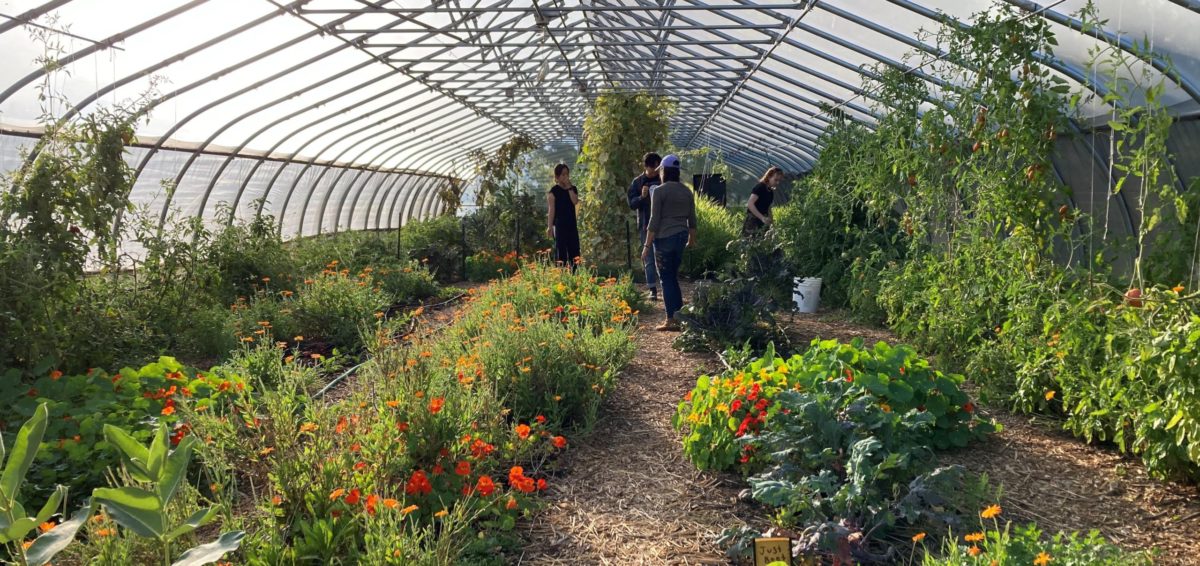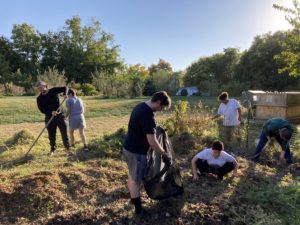Cultivating Climate Solutions at the Knox College Farm
- by Elise Kulers

Cucumber vines climbed 10 feet high to the top of the hoop house, leafy ginger plants intermingled with milkweed, calendula, and kale, and sunflowers towered over me in full bloom at the Knox Farm in Galesburg, Illinois. The fields were full of life in mid-October during my visit to Knox College this past fall, from the ripening speckled green beans to the pollinators wafting in between rows. The liveliest thing of all, however, was the soil beneath our feet.
In well-functioning agricultural systems, billions of beneficial soil microbes work together to perform essential functions, like breaking down organic matter, cycling nutrients, and keeping plants healthy. Careful attention to the treatment of the soil is required planting cover crops, and replenishing the land with nutrient-rich compost in favor of chemical fertilizer.
I joined students at the Knox Farm for a weekly workday and an Urban Agriculture class, both led by Farm Manager and Acting Director of Sustainability Initiatives Tina Hope. I was immediately put to work tending the compost pile, harvesting delicata squash, and spreading a mix of oat, pea, and radish seeds as cover crops to prepare the beds for winter. Students play a large role in running the farm, which consists of two large high tunnels (temporary structures that extend the growing season, also called hoop houses) and one acre of row crops and fruit trees. Nearly all the food grown on the farm gets purchased by Bon Appétit and served in the Knox dining hall.

Students tend to the Knox Farm’s compost pile.
As Tina explains, the attention to healthy soil management, crop biodiversity, and closed-loop systems are all part of the Knox Farm’s approach to regenerative agriculture. Beyond the many ecosystem services it provides, it may also be one of our best bets at addressing the climate crisis.
When nutrient-rich farmland is maintained with regenerative practices, it can act as a carbon sink, storing more carbon than it releases. While experts have some varied opinions on the matter, some scientists say that if scaled up, we could sequester more than 100% of current annual CO2 emissions with this approach.
Healthy soil as a solution was on my mind when, after a week of thinking and talking about sustainability with students at Knox, my visit came to an end with a community conversation about food systems and climate change. As students enjoyed a lovely, warming stew by Knox Executive Chef Lisa Betor — made entirely with produce grown on campus — I shared all I had learned that week about the Knox Farm and its place in the larger struggle to combat the climate crisis. Of the many solutions and initiatives we talked about, from shifting to plant-based foods to reducing food waste, the potential of regenerative agriculture felt especially close to home.